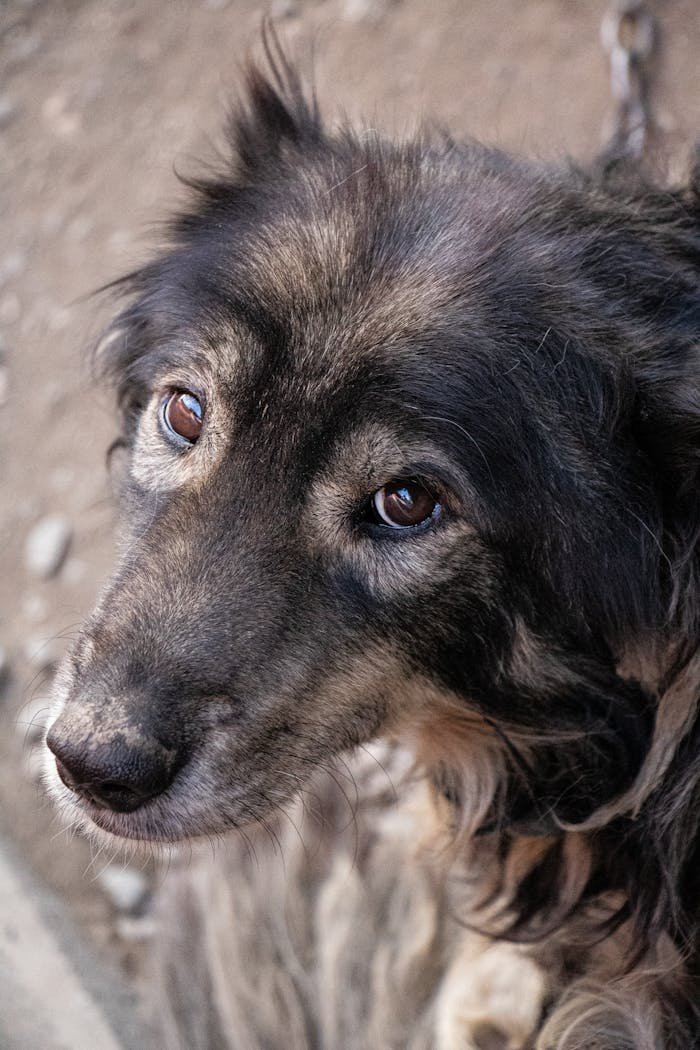Do Dogs Eyes Change Color – Learn why a dog’s eye color may change over time, the science behind it, and whether it’s normal or a sign of health concerns.
Do Dogs Eyes Change Color: In Depth Analysis
Recently, I figured it out that dogs’ eyes change color. I have 2 dogs. One of them, got brown eyes few months ago. I was curious why that happened. Is my dog affected by any virus infection or it is normal? I talked to Vet Hospital and performed lot of online research. Actually, you do not need to worry always about your dogs if their eyes change color. Today, I will share my experience with all of you so that you can easily find out when you need to worry about your dog. Let’s explore our article do dogs eyes change color.
Have you seen your dog’s eye color changing? A dog’s eye color can be interesting and beautiful. However, it can also show some health problems. Small changes in eye color can be normal as dogs get older. Still, some eye color changes can mean more serious issues. If you notice these changes and know their reasons, you can help your dog get the right care on time.
Understanding the Basics of Dogs’ Eye Color
A dog’s eye color, like in humans, is mainly decided by the amount and spread of melanin in the iris. The iris is the colored part of the eye around the pupil. Melanin is a pigment that also gives color to skin and hair. It controls how much light the iris takes in, which affects the eye color we see.
Genetics set the first eye color of a dog. However, other things can change that color over time. The dog’s breed, age, health issues, and some medications can all lead to changes in eye color during their life.

The Science Behind Eye Color in Dogs
The eye color of dogs is mainly about a substance called melanin. This is a pigment made by special cells known as melanocytes. There are two main types of melanin: eumelanin, which is black or brown, and pheomelanin, which is yellow or reddish-brown. The mix of these pigments, based on a dog’s genes, gives us the different eye colors we see in dogs.
A dog’s eye color is influenced by the genes inherited from their parents. Dogs with more eumelanin usually have darker eyes like brown or hazel. On the other hand, dogs that have less eumelanin or more pheomelanin can have lighter colors such as amber or yellow.
Sometimes, genetic differences can cause a complete absence of pigment in the iris, which leads to blue eyes. This happens when the cells that make melanin are not present or are not working. This change alters how light moves in the iris, making blue wavelengths stand out more. If you like to know about dog eyes color changes, you can read FirstVet article. They identified several factors that Cause Color Changes in Dogs.
Factors Influencing Changes in Eye Color
Some changes in a dog’s eyes are normal, while others might show health concerns. It is important to know the difference if you want to be a good pet owner. For instance, as dogs grow older, their eyes can get lighter because they produce less pigment. This is similar to how people get gray hair with age.
Certain breeds are also more likely to have specific eye colors or changes. Huskies, for instance, are famous for their beautiful blue eyes, which come from a gene variant. Meanwhile, breeds like Labrador Retrievers usually have brown eyes.
It is very important to see a veterinarian if a dog’s eye color changes suddenly or a lot. These changes could be signs of an eye infection, inflammation, or serious problems like cataracts or glaucoma. These issues need quick medical care.
Preparing to Monitor Your Dog’s Eye Color Changes
Before you track any changes, be ready. Know your dog’s eye health history. Gather some basic tools to help you monitor it.
Keep in mind that you should check your dog’s eye color as part of regular vet visits. You are the first line of defense for your dog, but a veterinarian can give a professional diagnosis and suggest the right treatments if needed.
What You Will Need to Get Started
- First, set up a visit with your vet. This first appointment is important to check your dog’s eye health. The vet will look at your dog’s eyes and see if there are any current issues or inherited traits. This information is very important for spotting changes later and knowing what is normal for your dog.
- Next, keep records. You can use a simple notebook or a digital spreadsheet to track details about your dog’s eye color. Write down the date, lighting conditions, and a clear description of the eye color. Taking photos can help too, but make sure to keep the lighting and angles the same for best comparisons.
- Finally, talk about your findings. It’s important to share your notes and any worries with your vet. They can help understand your records and tell you if you need to check anything more closely.
Recognizing Normal vs. Concerning Changes
It is important to know when eye color changes are normal and when they need a vet’s help. Small changes in color can happen, especially in older dogs and are usually harmless. But if you see quick or big changes, you should check it out right away.
Here’s a way to tell the difference:
Normal Changes:
- The eye color slowly gets lighter as the dog ages
- There might be small color differences between the two eyes
Warning Signs:
- Quick and major changes in color
- Cloudiness or haziness in the pupil
- Redness, swelling, or discharge from the eyes
- Signs of pain or discomfort
If you see any warning signs, talk to your veterinarian right away. These may be signs of other health issues like infections, injuries, or long-term problems like cataracts or glaucoma.
Step-by-Step Guide to Tracking Eye Color Changes in Dogs
Now that you are ready, let’s look at an easy three-step way to track changes in your dog’s eye color. First, you need to set a baseline. Next, keep an eye out for any changes. Finally, if you have any worries, talk to your veterinarian.
Using this simple method can give you helpful information about your dog’s health. It can also help you deal with any problems quickly.
Step 1: Establish a Baseline of Your Dog’s Current Eye Color
The first step is to set a baseline. This is very important during puppyhood because a puppy’s eye color may change until they grow up. Note your puppy’s eye color when their eyes first open.
In the next few weeks and months, you may see small changes in color as their pigmentation develops. Keep in mind that a puppy’s starting blue eyes may not be their permanent eye color.
When your dog becomes an adult, their eye color will stay the same. This permanent eye color is your baseline for watching any future changes.
Step 2: Monitor for Any Changes Over Time
- Make eye checks a regular part of your dog’s care. Pick a day and time each week to look at your dog’s eyes. Natural light is best for seeing their real eye color.
- When you check, see if there are any changes in color, clarity, or patterns in the iris. Pay extra attention to any sudden changes from what you normally see. Slow changes can be okay, especially as your dog gets older, but quick changes may need a vet’s help.
- Write down what you see in your log. Include the date, light conditions, and a note about any changes. If you can, take pictures and try to keep the lighting and angles the same each time.
Step 3: Documenting Changes and Consulting with a Veterinarian
Thorough papers are very important for talking with your vet. During your dog’s checkups, share your notes and any worries you have. Your veterinarian will look at your records, do a full eye exam, and find out if there are any changes that need attention.
Finding problems early is key for many eye conditions. By keeping a close watch and writing down changes, you help make sure your furry friend gets care on time. Your notes and your vet’s skills together can lead to the best results for your dog’s eye health.
If you see any sudden changes in your dog’s eye color or any signs of discomfort or vision issues, don’t wait to schedule a vet visit. Early notice can be very important for treating eye conditions well.
Common Reasons for Eye Color Changes in Dogs
Many things besides aging can change your dog’s eye color. It’s good to know these changes. That way, you can tell if it’s normal or if your dog needs to visit the vet.
The reasons can be normal, like changes due to age, or they could mean health problems in different parts of the eye. Let’s look at some common reasons for changes in a dog’s eye color and what they may mean.
Age-Related Changes and What They Mean
As dogs get older, their eye color can change a little. This usually means that the iris becomes lighter, just like human hair can turn gray as time goes by. This happens because melanin production decreases in older dogs.
One change often seen in older dogs is called nuclear sclerosis. This makes the lenses in their eyes look cloudy or bluish-gray. Many people mistake it for cataracts. However, nuclear sclerosis usually doesn’t greatly impact their vision, although some dogs may notice a slight haziness.
Overall, changes in eye color in senior dogs are usually a normal part of aging. Still, it is important to tell these changes apart from signs of eye problems. That’s why regular vet checkups are important. They help make sure that normal aging and health issues are not confused.

Health Issues that Can Cause Eye Color Changes
Some changes in eye color are normal, but others can be linked to health concerns. It’s important to notice these signs and get your pet to the vet quickly to avoid problems.
Cataracts happen when the eye’s lens becomes cloudy, often due to aging or issues like diabetes. This can make the pupils look milky white or gray. If not treated, cataracts can lead to blindness. Glaucoma is another issue. It causes higher pressure in the eye, leading to a bluish haze. This can cause pain and vision loss.
Inflammation in the eye can happen from allergies, infections, or injuries. This may change the eye color and could come with redness, discharge, or cloudiness. You should take your pet to the veterinarian for a proper diagnosis and treatment. This helps keep your furry friend’s vision safe.
Conclusion
In conclusion, knowing about changes in your dog’s eye color is very important for keeping them healthy and happy. By spotting normal and worrying changes, writing down what you see, and talking to a veterinarian when needed, you can help keep your dog’s eyes in good shape. This can include changes due to aging or possible health problems. It is very important to be alert and keep track of these changes. Remember, your dog’s eyes show their overall health; watching for any color shifts can help with their quality of life. Stay informed, watchful, and caring towards your dog’s eye health.
You can also visit our website Pet Buddies Care for getting more information about pet cares and pet products.
Frequently Asked Questions
At what age can a dog’s eye color start to change?
Puppies can change their eye colour when they are just a few weeks of age. As they grow, their pigmentation develops. Their eye colour will keep shifting until it settles into its adult shade by about six months old.
Is it normal for all dogs’ eyes to change color as they age?
Some dogs may not have big changes in eye color, but it can happen as they get older. Like people, dogs can produce less pigment as they age. This may cause their eye color to change a little bit.
What does a change in eye color indicate about my dog’s health?
Changes in eye color can be surprising. If the change happens suddenly or is very noticeable, it could be a sign of health concerns. It is important to talk to a vet and have their eyes checked. This helps to make sure there are no serious conditions.
How can I tell if the eye color change is due to a health issue?
Changes in eye color can come with other signs. These signs include cloudiness, redness, discharge, or changes in pupil size. Such symptoms often suggest health problems. It is important to get advice from a veterinarian for a correct diagnosis and treatment.
Should I be concerned if my dog’s eye color changes suddenly?
A quick shift in a dog’s eye color is important. If it happens with other issues, you should see a vet right away. This change can indicate an eye injury, an infection, or another serious problem that needs fast attention.



